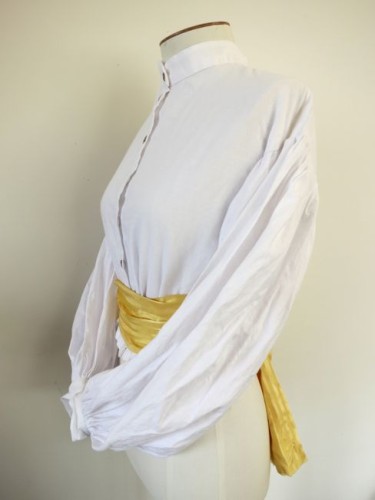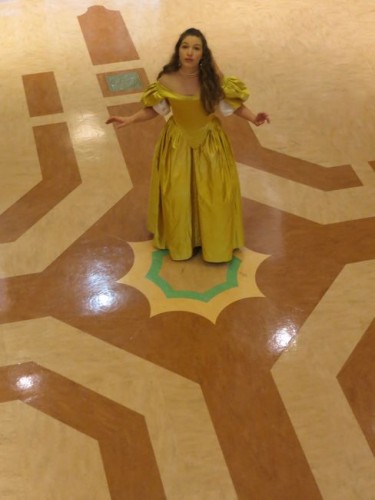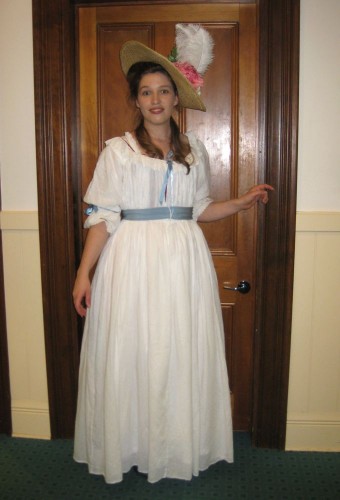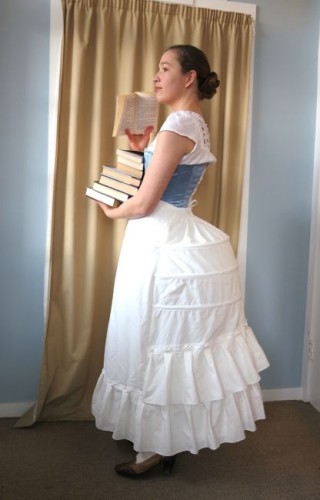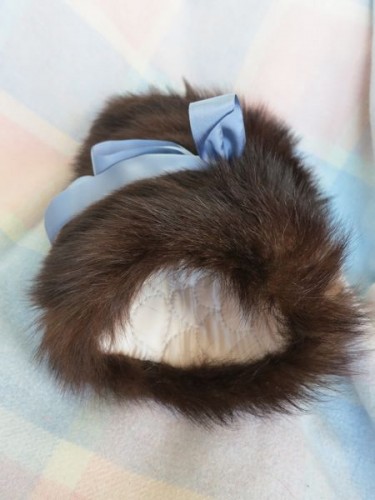My ‘Separates‘ challenge did not quite go to plan this fortnight.
I’d hoped to make a ca. 1900 blouse, all white lawn and lace trim, to be worn with my Chinoiserie skirt, and my Faille Skirt of Faille, and any future 1900s skirts. I got a pattern draped and drafted, my fabric located, pre-washed and pressed, and lace to match selected. Then my back and neck gave out, and I spent three days staggering around the house on anti-inflammatories and painkillers, just trying to stay alert enough to give lectures and teach classes. Even once I felt better, being in front of the sewing machine was less-than-fun, and cutting out was simply impossible.
So instead, I had a mad brain-and-UFO-pile scramble, and unearthed what is sadly not my oldest UFO ever, but is the oldest thing I’ve blogged about and never finished. Yes, back in Jan 2009, in only my second blog post ever, I mentioned making two garibaldi blouses.
And I never quite finished them. At the time I needed to “add the waistbands, hem the cuffs, add buttons and buttonholes and trim them with lots of fun frilly lace.”
I did the buttons and buttonholes. And then they sat in my UFO pile for 5 and a half years in need of hems and cuffs. Pitiful.
The delay was partly because I had no need for them, partly because they were started in a hurry and even at the time were not up to my skills/standards, and partly because garibaldi blouses just aren’t the most flattering garments. But needs must, and I wanted something finished, and a blouse is certainly finished.
So I hemmed one blouse, and attached the cuffs:
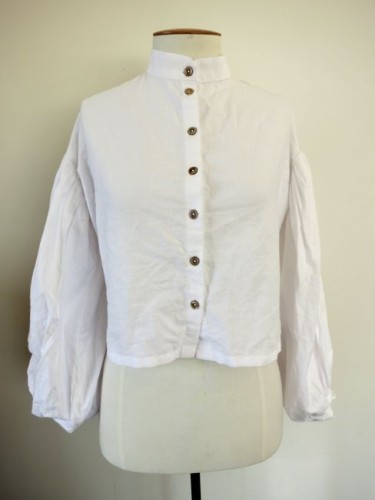
Hurrah! A finished project!
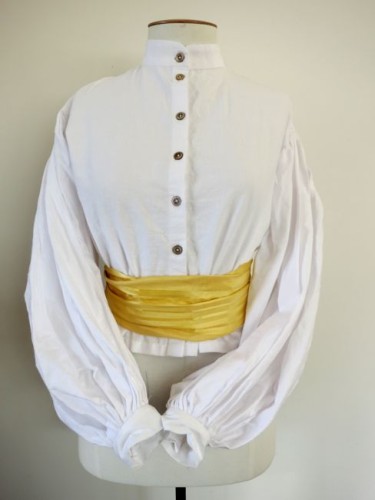
I mean, they aren’t great. The collars are a little high and tight. I cheated and did everything by machine. The pleating in the sleeves is a bit crap. I couldn’t find the same buttons I used in the front for the cuffs, so they are slightly different:
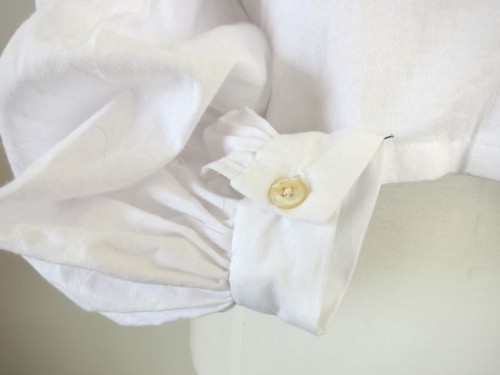
But it is done! After 5 and a half years!
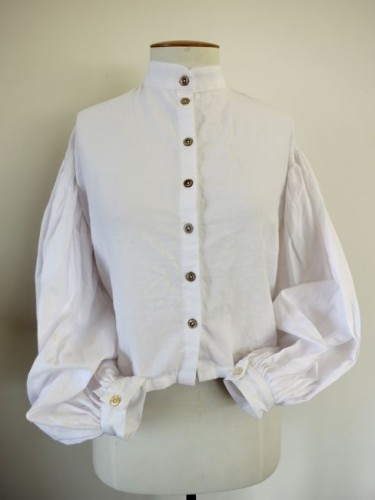
And done is beautiful!
It might look OK with 1860s Greek Key skirt, but the sad part is I don’t really have much to pair it with. The skirts I originally made it to go with has long since been given away.
The Challenge: #16 ‘Separates’
Fabric: Erm…well, 5 and a half years ago I must have bought about a metre and a half of white cotton muslin/calico to get started with
Pattern: My own
Year: ca. 1860
Notions: thread, shell buttons
How historically accurate is it? Meh. The fabric is crap quality for the time, so is the construction. The cut is reasonable. Something similar might have been worn by someone quite poor without access to better fabric and skills, but then, it’s still totally machine sewn, and a bit early for that to be plausible. 30% more or less.
Hours to complete: 50 minutes to finish.
First worn: Not yet.
Total cost: At this point? Free, so that’s a bonus.
The clever readers among you will be wondering what happened to the other shirt. I hemmed it. Made a cuff. Gathered the cuff end. Haven’t sewn the cuff on yet. Hope that doesn’t take another 5 and a half years…
